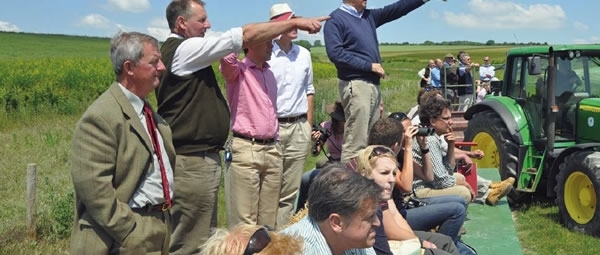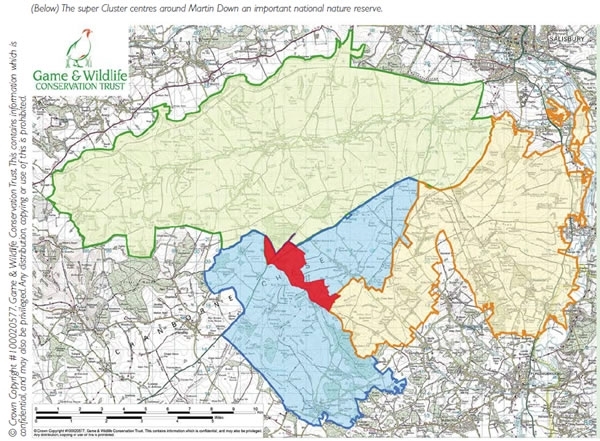Peter Thompson looks at the launch of a new super Cluster after the success of the Farmer Clusters, where working together, farmers can deliver more for wildlife on a much bigger scale.

Following Sir John Lawton’s 2010 report Making Space for Nature in which he stated that wildlife habitats should be “bigger, better and joined”, the GWCT helped farmers set up a Nature Improvement Area (NIA) in the Marlborough Downs to test this landscape scale approach to conservation. It was the only farmer-led group out of the 12 NIAs created, and proved to be a very successful pilot scheme.
This encouraged the Trust to find out if this same ‘bottom-up’ process of working alongside a group of
farmers on a landscape scale would work without the large pot of money that backed up the NIAs. Would
farmers have the same enthusiasm to work together if they only had the normal everyday funding streams available to all land managers? Would there be the same improvement in soil, water and biodiversity?
Natural England (NE) funded the GWCT to test this. We helped to set up five ‘Farmer Clusters’, as they became known, to assess the capacity for an overall gain in biodiversity from a number of farmers voluntarily working together, at the landscape-scale (rather than as separate farms), devising their own conservation plans, supplementing but underpinning existing agrienvironment schemes and facilitated by an experienced advisor chosen by them.
To cut a long story short, farmers very quickly understood the benefits gained by joining forces to manage the countryside and showed huge enthusiasm for the task ahead. However, it became apparent that a good co-ordinator or facilitator was key to the success of the group achieving positive momentum, mainly because farmers are all busy people and the demands of running a business can easily get in the way.
A facilitator’s role might include organising meetings and training workshops; ensuring that conservation efforts are co-ordinated and delivered on time; undertaking wildlife surveys; providing advice on species management, and sourcing materials such as nest boxes and feeders.
Natural England, who had followed our pilot project with great interest, responded quickly by creating a
£7.3 million facilitation fund to enable Farmer Clusters to pay someone to fulfil this important co-ordinator role.
This has resulted in 49 Farmer Clusters across England being backed by the facilitation fund, with one more application window still to come. The area covered by these groups is an impressive 210,404 hectares (519,919 acres) and involves 981 farms.

We are always trying to progress and test new ideas, so we have now helped farmers to set up a ‘super Cluster’ around an important national nature reserve (NNR), Martin Down in Hampshire. A combination of
funds from Natural England, GWCT and private sources has enabled us to employ Jess Brooks to facilitate
part of this new super Cluster.
Jess will be on hand to offer her time, contributing a variety of ecological and organisational skills. Importantly, the farmers themselves have put in £1 per hectare to help too – really showing their commitment to the project. Three Farmer Clusters now adjoin each other rather like a wheel around the nature reserve, which acts as the central axle (see map above). This is excitingly beginning to deliver Sir John Lawton’s vision of ‘bigger, better and joined’ to the letter.
GWCT & Natural England Farmer Clusters Conference
We are hosting our very first conference on Farmer Clusters, which is taking place at the Royal Geographical Society in London on 12th October 2017.
Throughout the conference you'll be able to hear first-hand accounts of running a Farmer Cluster and about the unique opportunities it provides and Sir John Lawton will deliver the keynote address.
The packed programme includes speakers from Natural England and the GWCT, as well as farmers and advisers, all of whom will share their experiences throughout the day.
You can see the full programme and book your place here.